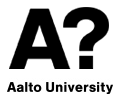Yesterday, I created a new Zenodo community: “ALD saturation profile open data”, https://zenodo.org/communities/ald-saturation-profile-open-data/. In my research group, we intend to use this first for sharing experimental saturation profile data related to a publication we are writing (access through the ChemRxiv, https://doi.org/10.26434/chemrxiv.12366623).
Before we are so far that we can actually deposit open data there, we know that there are many things to solve. I anticipate also that we will run into new questions, of which we were not aware yet.
I understand that others may have interest also for this open science community. It came to mind, that now could be a good time to do some collective thinking on how to progress. To do so, I created an open file Google Docs file, to collect ideas and questions by different people together.
Below you find the text I wrote for the document (introductory part). The document will evolve—ideas and questions will be added and the introductory part may also evolve.
If interested in the new Zenodo community, please read through and share your views/ideas/questions with me, and others!
Espoo, Finland, 7.8.2020
Riikka Puurunen
https://docs.google.com/document/d/1dBzXyb7T0N8htZIeRK6HqKcHeEaIY4CUmP0cf7JUc2M/edit?usp=sharing
Zenodo’s ALD saturation profile open data community: Ideas and questions?
File initiated by Riikka Puurunen 7.8.2020
Introduction
On August 6, 2020, a new community was created in zenodo.org to enable the sharing of experimental saturation profiles measured for atomic layer deposition (ALD) processes. Opening this type of a community has been on my (Riikka Puurunen’s) mind for quite some time already. Now, it was finally created, to enable our first open data publication related to ALD saturation profiles in relation with finishing a manuscript (available via ChemRxiv, https://doi.org/10.26434/chemrxiv.12366623) for publication in a scientific journal.
Creating the community was easy. I understand that apart from it’s web address https://zenodo.org/communities/ald-saturation-profile-open-data/, everything in the descriptions can be changed, including the name of the community. At the time of writing this text reads “ALD saturation profile – open data”.
What is not easy, are the steps that follow. How should we proceed with describing the community and setting rules or guidelines for posting data in it? Could and should we create guidelines for metadata to include? Machine readability appears to be important in open data — how do we make our data machine-readable? How can the community be best used for in a longer term: not just data obtained with our current test structures, but other test structure types as well? Should we also include simulated saturation profiles, not just experimental ones? In general: how will the just-created community serve the scientific community the best?
Now is the right time to bring out ideas and questions related to the Zenodo’s ALD saturation profile open data community. The purpose of this document is to enable real-time collection of thoughts of anyone in the world who is interested in this topic and interested in sharing his/her viewpoints. To contribute, please share your thoughts in the next section. Let’s keep the thoughts of one person as bullet-points under one heading. Others can best use Google’s commenting function to discuss the items. The document has (for some time, at least) open editing, so please don’t modify other person’s text. I will check all comments — say — at the end of August 2020.
Hopefully, we get feedback, which helps us formulate a useful community! If you’d like to get more involved in the planning, you can contact me — Twitter (@rlpuu) and email (firstname.lastname@aalto.fi) work fine.
Espoo, Finland, 7.8.2020
Riikka Puurunen
<Continues with Ideas and questions part>

